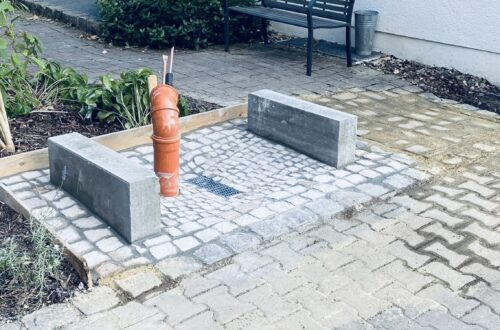Atera RMM Software: Effiziente Deinstallation – Ein praktischer Leitfaden mit einem Powershell-Skript
Effektive Ressourcenverwaltung ist ein entscheidender Aspekt für Unternehmen, die ihre IT-Infrastruktur reibungslos betreiben möchten. Eine beliebte Methode zur Vereinfachung dieser Aufgabe ist der Einsatz von Remote Monitoring und Management (RMM) Software. Diese ermöglicht es IT-Teams, ihre Systeme und Netzwerke effizient zu überwachen, zu verwalten und zu warten.
Jedoch kann es in manchen Fällen vorkommen, dass eine RMM Software plötzlich die Verbindung zum zentralen Portal verliert. Dies kann verschiedene Gründe haben, wie beispielsweise Netzwerkprobleme oder andere technische Störungen. In solchen Situationen besteht die Notwendigkeit, die betreffende RMM Software manuell von einem Client zu deinstallieren, um die korrekte Funktionalität wiederherzustellen.
In diesem informativen Artikel stellen wir Ihnen ein nützliches Powershell-Skript vor, mit dem Sie die Deinstallation der ATERA RMM Software erfolgreich durchführen können. Powershell ist eine leistungsstarke Skripting-Sprache und Automatisierungsumgebung von Microsoft, die es Ihnen ermöglicht, komplexe Aufgaben und Prozesse in Windows-Umgebungen zu automatisieren.
Bevor wir uns jedoch mit dem Skript befassen, lassen Sie uns kurz die Begriffe RMM und Splashtop erklären. RMM steht für Remote Monitoring und Management und bezieht sich auf eine Softwarelösung, die es IT-Administratoren ermöglicht, Computer und Netzwerke aus der Ferne zu überwachen, zu verwalten und zu unterstützen. Mit RMM können IT-Teams proaktiv Probleme identifizieren, Updates und Patches durchführen und die Systemleistung optimieren.
Splashtop hingegen ist eine führende Fernzugriffssoftware, die speziell für den sicheren und zuverlässigen Remote-Zugriff auf Computer entwickelt wurde. Mit Splashtop können Benutzer von nahezu jedem Gerät aus auf ihre Computer oder Server zugreifen und diese fernsteuern. Diese Lösung bietet eine hohe Benutzerfreundlichkeit, Sicherheit und eine beeindruckende Leistung, um eine reibungslose Fernverbindung zu gewährleisten.
In diesem Artikels geht es um die Software ATERA, eine renommierte RMM-Plattform, die es IT-Dienstleistern ermöglicht, ihre Ressourcen effektiv zu überwachen und zu verwalten. ATERA bietet eine umfassende Palette von Funktionen, darunter Echtzeitüberwachung, Patch-Management, Fernzugriff und Automatisierung, um IT-Teams dabei zu unterstützen, ihre Infrastruktur nahtlos zu betreiben.
Hier das Skript:
–
#Start Script
Function Get-UninstallCodes ([string]$DisplayName) {
‚HKLM:SOFTWARE\Microsoft\Windows\CurrentVersion\Uninstall‘, ‚HKLM:SOFTWARE\WOW6432Node\Microsoft\Windows\CurrentVersion\Uninstall‘ | ForEach-Object {
Get-ChildItem -Path $_ -ErrorAction SilentlyContinue | ForEach-Object {
If ( $(Get-ItemProperty -Path $_.PSPath -Name ‚DisplayName‘ -ErrorAction SilentlyContinue) -and ($(Get-ItemPropertyValue -Path $_.PSPath -Name ‚DisplayName‘ -ErrorAction SilentlyContinue) -eq $DisplayName) ) {
$str = (Get-ItemPropertyValue -Path $_.PSPath -Name ‚UninstallString‘)
$UninstallCodes.Add($str.Substring(($str.Length – 37),36)) | Out-Null
}
}
}
}Function Get-ProductKeys ([string]$ProductName) {
Get-ChildItem -Path ‚HKCR:Installer\Products‘ | ForEach-Object {
If ( $(Get-ItemProperty -Path $_.PSPath -Name ‚ProductName‘ -ErrorAction SilentlyContinue) -and ($(Get-ItemPropertyValue -Path $_.PSPath -Name ‚ProductName‘ -ErrorAction SilentlyContinue) -eq $ProductName) ) {
$ProductKeys.Add($_.PSPath.Substring(($_.PSPath.Length – 32))) | Out-Null
}
}
}Function Get-ServiceStatus ([string]$Name) { (Get-Service -Name $Name -ErrorAction SilentlyContinue).Status }Function Stop-RunningService ([string]$Name) {
If ( $(Get-ServiceStatus -Name $Name) -eq „Running“ ) { Write-Output „Stopping : ${Name} service“ ; Stop-Service -Name $Name -Force }
}Function Remove-StoppedService ([string]$Name) {
$s = (Get-ServiceStatus -Name $Name)
If ( $s ) {
If ( $s -eq „Stopped“ ) {
Write-Output „Deleting : ${Name} service“
Start-Process „sc.exe“ -ArgumentList „delete ${Name}“ -Wait
}
} Else { Write-Output „Not Found: ${Name} service“ }
}Function Stop-RunningProcess ([string]$Name) {
$p = (Get-Process -Name $_ -ErrorAction SilentlyContinue)
If ( $p ) { Write-Output „Stopping : ${Name}.exe“ ; $p | Stop-Process -Force }
Else { Write-Output „Not Found: ${Name}.exe is not running“}
}Function Remove-Path ([string]$Path) {
If ( Test-Path $Path ) {
Write-Output „Deleting : ${Path}“
Remove-Item $Path -Recurse -Force
} Else { Write-Output „Not Found: ${Path}“ }
}Function Get-AllExeFiles ([string]$Path) {
If ( Test-Path $Path ) {
Get-ChildItem -Path $Path -Filter *.exe -Recurse | ForEach-Object { $ExeFiles.Add($_.BaseName) | Out-Null }
}
}# Mount HKEY_CLASSES_ROOT registry hive
New-PSDrive -Name HKCR -PSProvider Registry -Root HKEY_CLASSES_ROOT | Out-Null#######
# START: Information gathering
######## Get MSI package codes from the uninstall key
$UninstallCodes = New-Object System.Collections.ArrayList
‚AteraAgent‘, ‚Splashtop for RMM‘, ‚Splashtop Streamer‘ | ForEach-Object { Get-UninstallCodes -DisplayName $_ }# Get product keys from the list of installed products
$ProductKeys = New-Object System.Collections.ArrayList
‚AteraAgent‘, ‚Splashtop for RMM‘, ‚Splashtop Streamer‘ | ForEach-Object { Get-ProductKeys -ProductName $_ }# Define all the directories we’ll need to cleanup at the end of this script
$Directories = @(
„${Env:ProgramFiles}\ATERA Networks“,
„${Env:ProgramFiles(x86)}\ATERA Networks“,
„${Env:ProgramFiles}\Splashtop\Splashtop Remote\Server“,
„${Env:ProgramFiles(x86)}\Splashtop\Splashtop Remote\Server“,
„${Env:ProgramFiles}\Splashtop\Splashtop Software Updater“,
„${Env:ProgramFiles(x86)}\Splashtop\Splashtop Software Updater“,
„${Env:ProgramData}\Splashtop\Splashtop Software Updater“
)# Get all possible relevant exe files so we can make sure they’re closed later on
$ExeFiles = New-Object System.Collections.ArrayList
„${Env:ProgramFiles}\ATERA Networks“ | ForEach-Object { Get-AllExeFiles -Path $_ }# Define a list of services we need to stop and delete (if necessary)
$ServiceList = @(
‚AteraAgent‘,
‚SplashtopRemoteService‘,
‚SSUService‘
)# Define a list of registry keys we’ll delete
$RegistryKeys = @(
‚HKLM:SOFTWARE\ATERA Networks‘,
‚HKLM:SOFTWARE\Splashtop Inc.‘,
‚HKLM:SOFTWARE\WOW6432Node\Splashtop Inc.‘
)#######
# END: Information gathering
######## Uninstall each MSI package code in $UninstallCodes
$UninstallCodes | ForEach-Object { Write-Output „Uninstall: ${_}“ ; Start-Process „msiexec.exe“ -ArgumentList „/X{${_}} /qn“ -Wait }# Stop services if they’re still running
$ServiceList | ForEach-Object { Stop-RunningService -Name $_ }# Terminate all relevant processes that may still be running
$ExeFiles.Add(‚reg‘) | Out-Null
$ExeFiles | ForEach-Object { Stop-RunningProcess $_ }# Delete services if they’re still present
$ServiceList | ForEach-Object { Remove-StoppedService -Name $_ }# Delete products from MSI installer registry
$ProductKeys | ForEach-Object { Remove-Path -Path „HKCR:Installer\Products\${_}“ }# Unmount HKEY_CLASSES_ROOT registry hive
Remove-PSDrive -Name HKCR# Delete registry keys
$RegistryKeys | ForEach-Object { Remove-Path -Path $_ }# Delete remaining directories
#Write-Host „Waiting for file locks to be freed“ ; Start-Sleep -Seconds 4
$Directories | ForEach-Object { Remove-Path -Path $_ }
#End of Script


